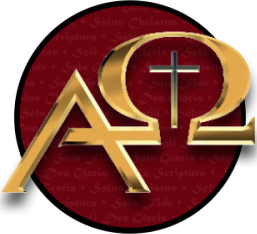The Ecclesiastical Text position could be considered, in essence, a variation on the Textus Receptus position described in the previous blog. However, while both agree upon the resulting textual tradition that must be appealed to as the authoritative text, the Ecclesiastical Text position arrives at that point in a very different way.
The main proponent of this position in recent times was Dr. Theodore P. Letis. Letis was a student of Dr. Edward F. Hills, also a staunch defender of the Textus Receptus, though on very different grounds from his protégé. Hills’ works include The King James Version Defended! in which he argues that God has providentially preserved His Word in the Textus Receptus.
Dr. Letis’ starting point was with the doctrine of verbal inspiration. He argues that the concept of an inerrant autograph was unknown to the Protestant Reformers and the later dogmaticians who wrote the great confessions of the church (e.g., the Westminster Confession of Faith). It is evident that these Protestant Dogmaticians favored a view of inspiration that placed inerrancy in the apographa, or the present, extant text, which for them would be the Textus Receptus. While early Princeton dogmaticians like Archibald Alexander could suggest that the autographs of Scripture may contain error (scribal, not doctrinal), Benjamin Warfield, a later Princetonian, adopted German text critical methodologies and introduced the concept of the inerrant autograph.
Letis suggests that Warfield’s reason for turning away from the concept of an authoritative apograph was due to the fact that textual critics of the time were attempting to use the vast quantity of variants in the New Testament to undermine its authority. Instead of appealing to the voice of sixteenth and seventeenth century theologians, Warfield placed inerrancy in the non-extant autographs. This enabled him to engage the critics and perform critical analysis of the variants without assaulting the inerrant, authoritative Scriptures. However, Warfield’s solution was, in Letis’ view, inadequate, since it did not really address the issue of what the Scriptures originally said. And, indeed, as time progressed, those within text critical circles began to see that the pursuit of the original autograph might be in vain. For those who held to the apographa, it did not matter what the original text said, since the true and authoritative text was the one currently in the hands of the church: the Textus Receptus.
It is upon this basis that Letis builds his position. He believes that by surrendering the Sacred Text to the world for examination as if it were any other piece of literature, the church has forsaken her role as the guardian of the Holy Scriptures. In Letis’ words, the Bible “has been lifted from its legitimate matrix within the bosom of the Church and has served countless students as a cadaver in the operating theatres of the world within the alien context of the Academy.” The danger of this is that it desensitizes the student from appreciating the Bible as the sacred Word of God. The church alone provides the right context for the proper use of the Sacred Scriptures. The church, argues Letis, has always recognized that it is the “localized and extant edition” of the Scriptures that is the infallible Word, and it is this that should be retained at all costs.
Given that there are no two copies of the Textus Receptus that are identical, Letis acknowledges that text critical principles still need to be applied to arrive at the text to be considered as the authoritative text. Note that for Letis it is irrelevant which readings are “original,” or even what the inspired author originally wrote. What Letis is trying to recover is the text that represents the last apographa–i.e., the text of the Protestant Dogmaticians: the Textus Receptus. In order to achieve this, he applies principles enunciated by Brevard Childs under the name of the “Canonical Approach.”
As Letis and Childs explain it, the Canonical Approach appears relatively simple. There are two rules: first, the idea of an “original text” needs to be abandoned. Secondly, the reading that should be used is the one that became exegetically and hermeneutically sanctioned (i.e., canonized). Again, the emphasis is put upon continuous, recognized witness from the earliest church, through the Fathers, the versions, and so forth. Only texts that can demonstrate that kind of heritage can be considered a part of the Ecclesiastical Text.
In order to help the reader better grasp the way in which this approach to textual criticism works practically, Letis provides an entire chapter in his book The Ecclesiastical Text dedicated to the investigation of the notorious variant in John 1:18, monogenh.j qeo,j (monogenes theos). This is the reading as it stands in the Nestle-Aland 27th edition of the Greek New Testament. However, there are two other prominent readings: o` monogenh.j qeo,j (ho monogenes theos), and o` monogenh.j ui`o,j (ho monogenes huios). While monogenh.j qeo,j and o` monogenh.j qeo,j are both found in early Egyptian manuscripts, the latter, o` monogenh.j qeo,j, is rejected on the basis of lack of patristic and versional support. The question then becomes which of monogenh.j qeo,j and o` monogenh.j ui`o,j is the correct reading. With regard to these two, Letis notes that both can trace their readings back to an early date, but while monogenh.j qeo,j is found among very early Syriac versions, the Latin, and other versions from a variety of places, o` monogenh.j qeo,j is found primarily in the writings of Valentinian Gnostics.
Letis goes on to demonstrate how the reading monogenh.j qeo,j would lend support to Gnostic interpretations of John’s Prologue, and attempts to show that Gnostic Coptic manuscripts could have had influence upon the text of the extant Greek manuscripts of John from Egypt. In the end, he concludes that while monogenh.j qeo,j certainly has the support of the earliest evidence, because this early evidence is from the hands of Valentinian Gnostics, there is good chance that they altered the text to suit their theological needs. By the time of Nicea, he believes that the church in both her Eastern and Western expressions had rejected this reading to be sure that no Gnostic or Arian interpretations could be applied to this passage. According to the Canonical Approach, therefore, o` monogenh.j ui`o,j would stand as the correct reading at this point since it is clearly the reading accepted by the church.
Proponents of other text critical positions tend to see the Ecclesiastical Text view as simply either the Textus Receptus position, or a Majority Text/Byzantine-Priority text position, hence it does not appear to get much specific attention in works addressing textual criticism. This means that those who oppose the Ecclesiastical Text position rarely address some of its specific nuances. For this reason, I would like to offer some points for consideration.
First, from the perspective of the Christian scholar, there must be agreement with Dr. Letis that the text under review is nothing other than the sacred Word of God. As such, it must deserve the respect of the critic. This fact does not necessarily change the practice of textual criticism, but it should most certainly keep the scholar focused on the goal of his work: restoring God’s Word in its fullness to His people. In light of this, should the scholar be most concerned about whether the text he reads is the text that was held by the Byzantine church through to the time of the Reformation, regardless of the accuracy of that text (presumably under the impression that the Eastern church was somehow exempt from heresy and error), or whether the text is as close as can possibly be discerned to the words God originally inspired? To suggest that, for example, the earliest readings of John 1:18 resulted from the influence of Valentinian heretics is to assume that such a reading can only be understood from a Gnostic mindset. Surely the same could be said of John 1:1? It is obvious even in our own day that passages of Scripture that plainly communicate Christian truth are perverted and distorted by cults and critics to say whatever they want them to say. Isn’t it perhaps just as possible that the tradition reflected in Letis’ text demonstrates a reaction to potential misunderstanding based on a faulty hermeneutic? There are plenty of examples in the extant manuscripts of “conjectural emendation,” where the scribe has altered the text based purely on what he thought it ought to say, since the way it reads, to his mind, could be taken the wrong way. I am not suggesting this is certainly the case with John 1:18, but I submit that this scenario is at least as likely as the one Letis put forward.
Second, the question over the search for the autographa raises the issues of inspiration, authority, and one’s doctrine of the church. Did God inspire the authors of Scripture, or did God inspire the church to produce His Word? Did God invest the original versions of the various books and letters that comprise the New Testament with divine authority, or did He invest that authority in whatever version of the Greek text the church of the Reformation decided was authoritative? Outside of a fiat ruling by the church based solely on tradition, upon what basis would the church determine that this one particular text is inspired? It is simply untrue to say that the original readings are not extant, and on that basis determine that a search for them is a search in vain. Since the Lord has been gracious to preserve such a host of witnesses to the text of the New Testament, there is a wealth of evidence available, and it is among the extant evidence that scholars can find the original readings. Modern textual scholars can pick up a critical edition of the Greek New Testament and know for certain that between the text and the apparati, he is looking at the Word of God as the Lord originally inspired it. The work of the textual critic is not to look outside of the text to see which readings the church has traditionally accepted. This is, I suggest, to invest in the church the kind of authority proposed by Roman Catholicism, and is hardly the mindset of a good Protestant! The text molds the church, not the other way round. Rather, the work of the textual critic is to use all the evidence the Lord has provided, both within history and within the manuscripts themselves, to determine which of the readings best reflects the text that God originally inspired. The fact that all manuscripts agree somewhere between 80-90% of the time demonstrates that the Lord has already given a firm foundation. But to trust that even the godliest of men throughout church history have infallibly preserved the text of the New Testament is, in the opinion of this writer, optimistic to the extreme. This is not a low view of the church, but a Biblical view of man.
Part 10: “Traditional Text” Positions: Byzantine Priority–coming soon…


